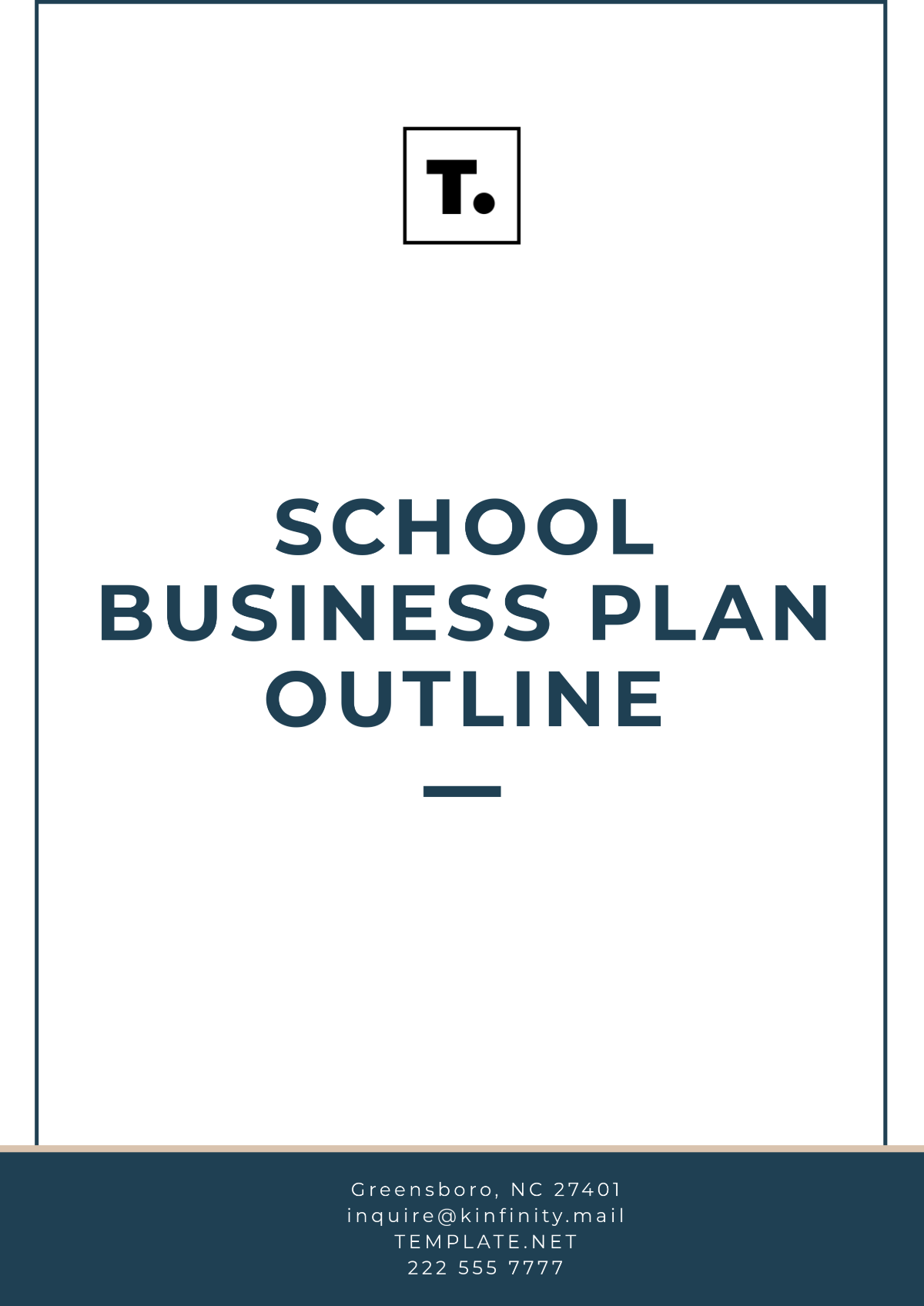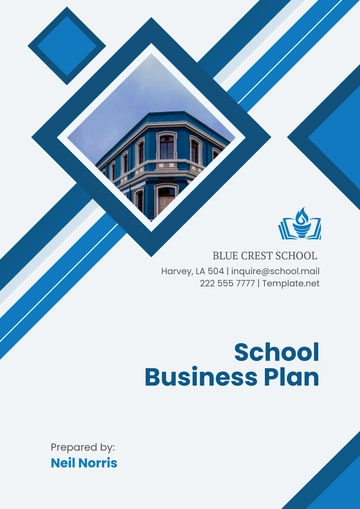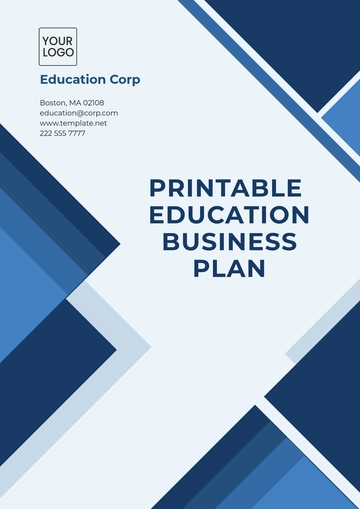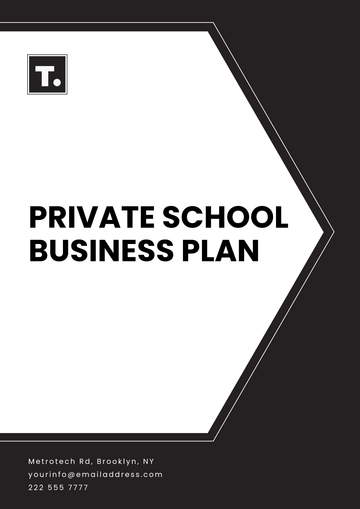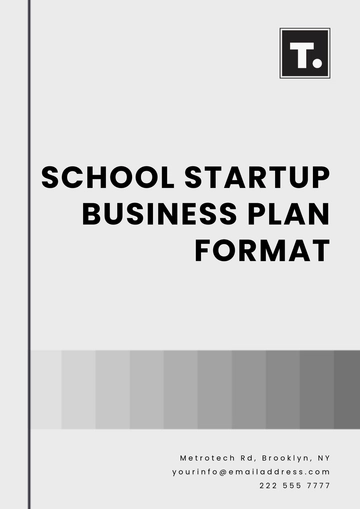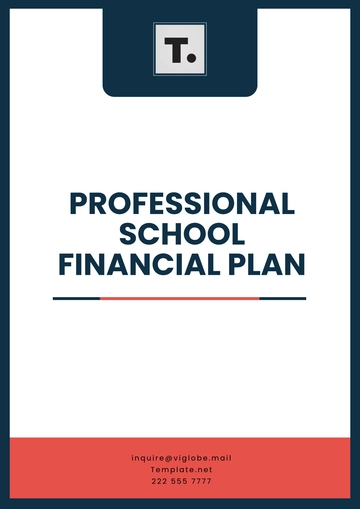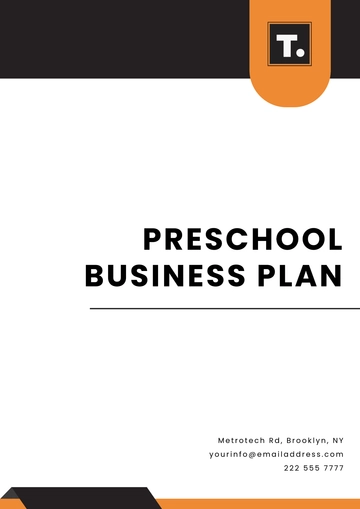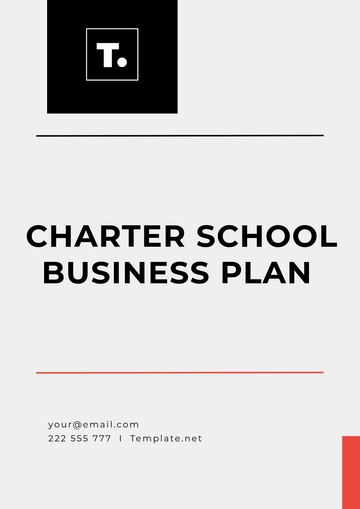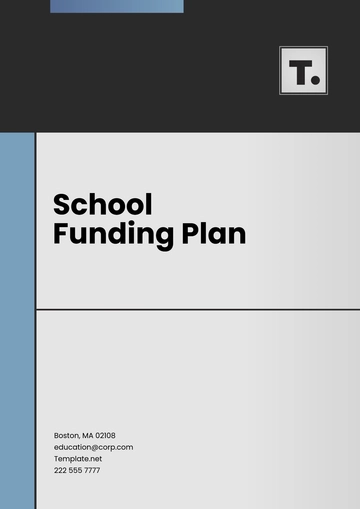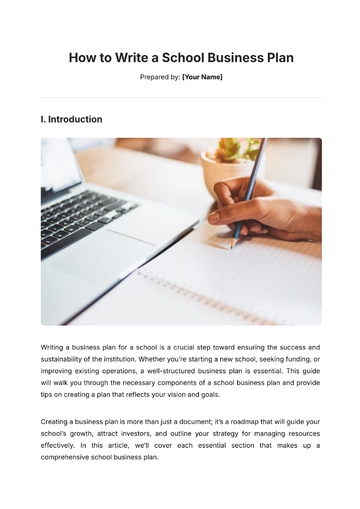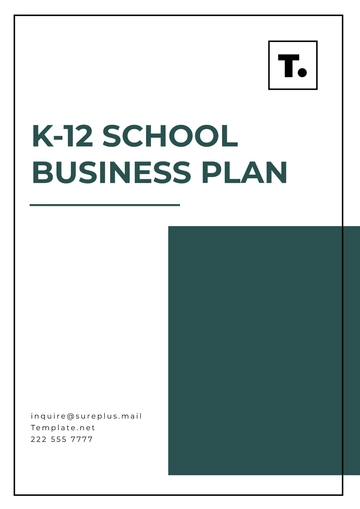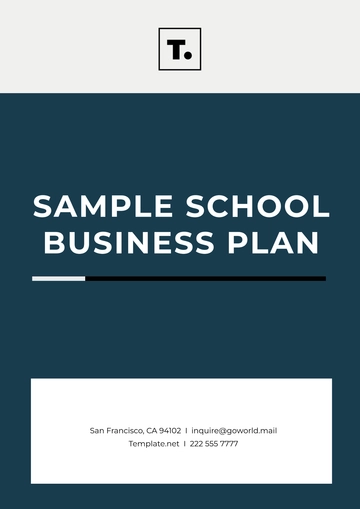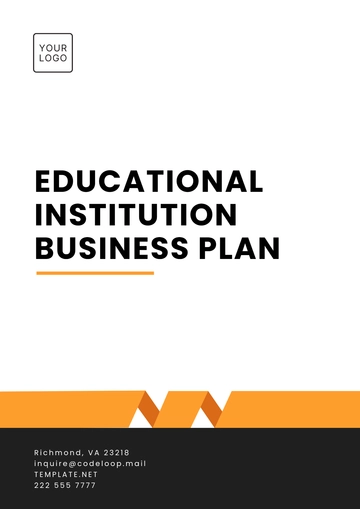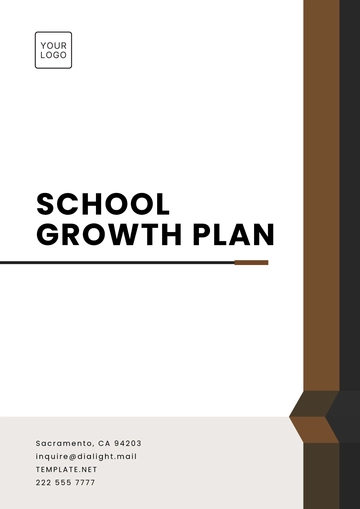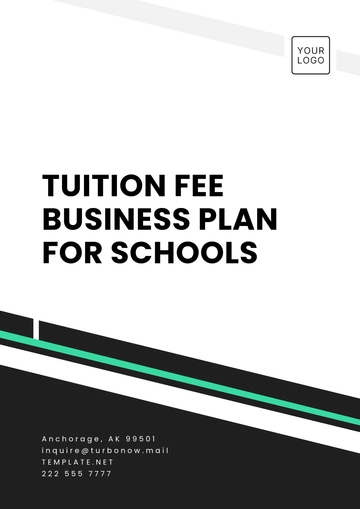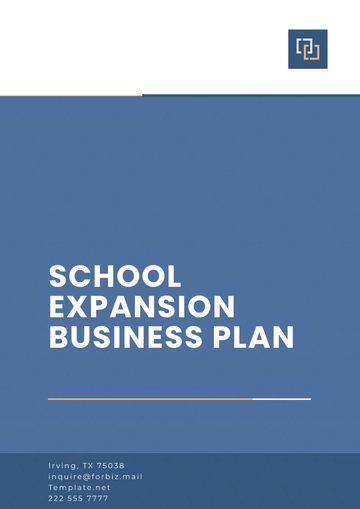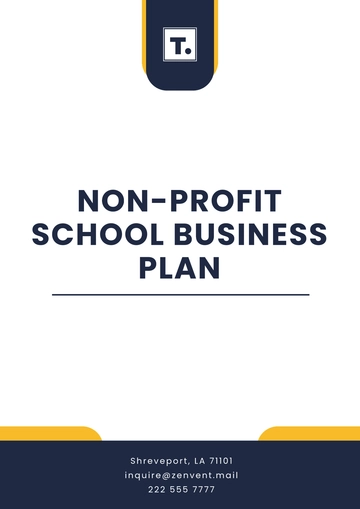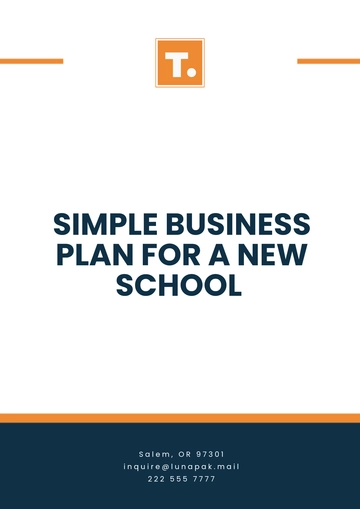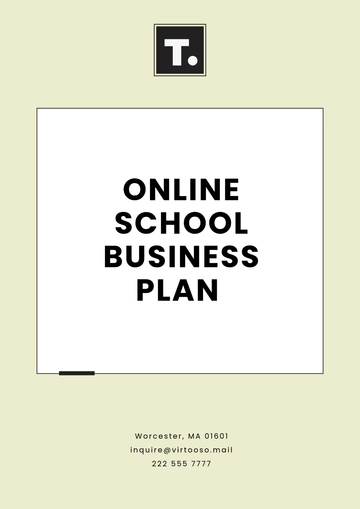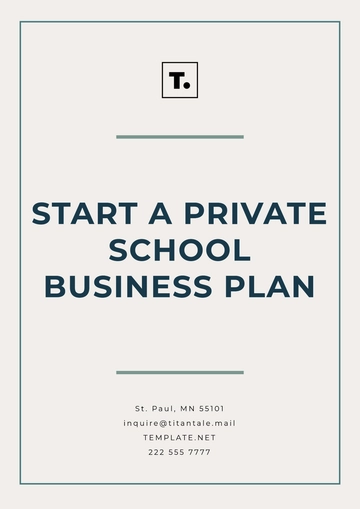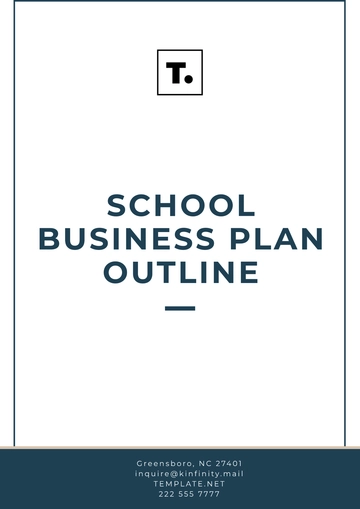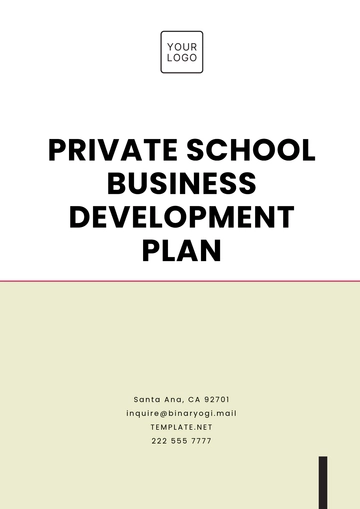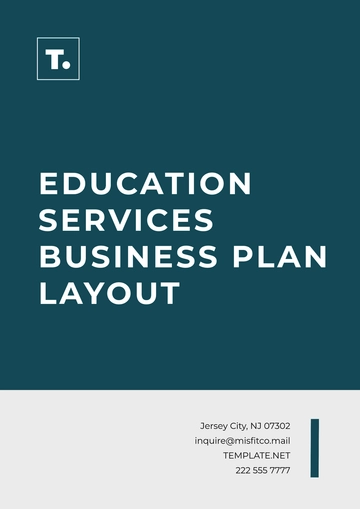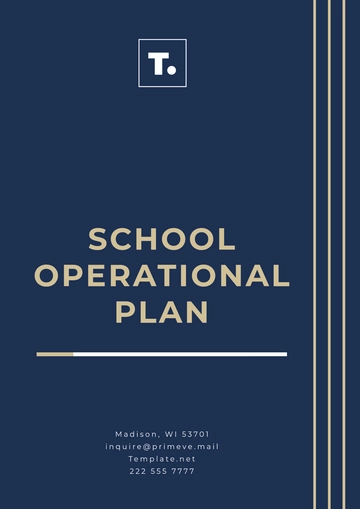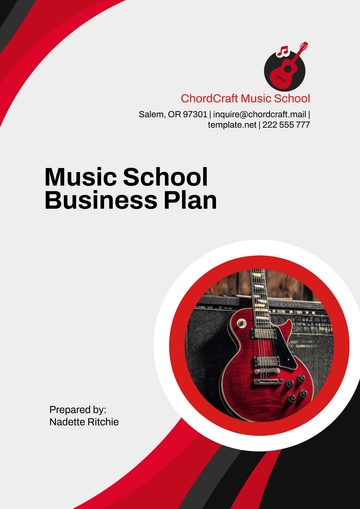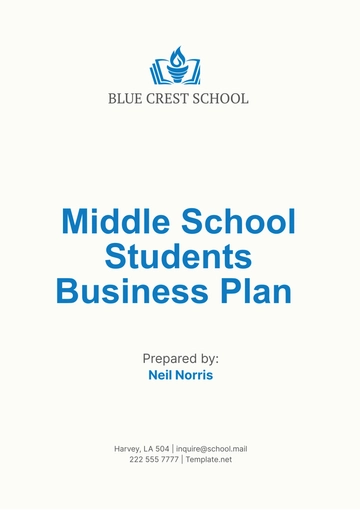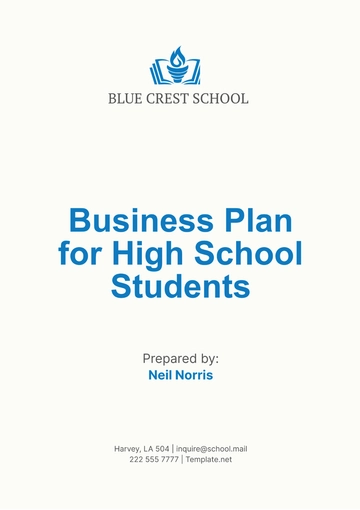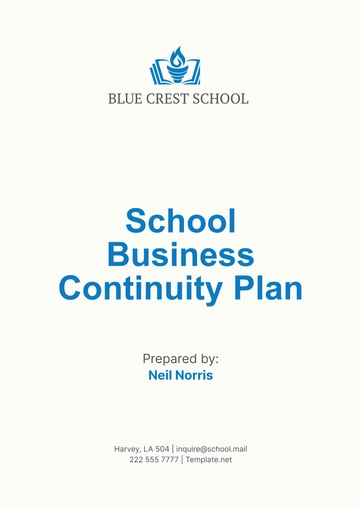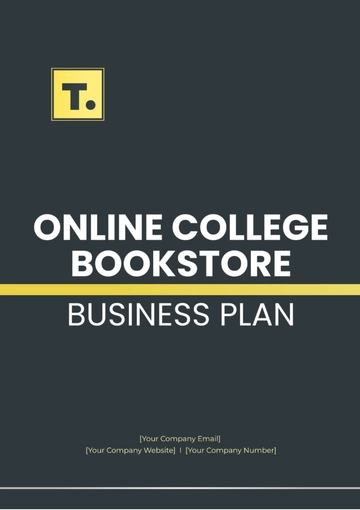School Business Plan Outline
1. Executive Summary
Mission Statement: What is the core purpose of the school? (e.g., providing quality education to children, fostering creativity, etc.)
Vision: Where do you see the school in 5-10 years? (e.g., becoming a leading institution in the community)
School Overview: Briefly describe the school’s concept, focus, and structure.
Business Objectives: Key goals to achieve (e.g., opening date, enrollment targets, academic achievements).
Key Success Factors: What will drive the school’s success? (e.g., excellent faculty, strong curriculum, community support)
Financial Highlights: Summarize key financial projections, including initial funding needs, projected revenue, and expenses.
2. School Description
Legal Structure: Is the school a nonprofit, for-profit, charter, private, or public institution?
Type of School: (e.g., elementary, middle, high school, specialty, etc.)
Location: The geographic location of the school and why it's ideal for the target market.
Educational Philosophy and Approach: The teaching style (e.g., Montessori, STEM-focused, traditional education, project-based learning).
Curriculum: Brief overview of the curriculum or academic programs.
Target Market: Demographics of the students (e.g., age, income, geographic region).
Competitive Advantage: What sets your school apart from others in the region?
3. Market Analysis
Industry Overview: Current trends in education (e.g., online learning, increasing focus on STEAM education).
Target Market Analysis:
Demographics: Age, income level, family structure, educational background.
Psychographics: Values, behaviors, and priorities of parents and students.
Competitive Analysis:
Direct competitors: Local schools, charter schools, private institutions.
Indirect competitors: Homeschooling, and online learning platforms.
Strengths and weaknesses of competitors.
Market Needs and Opportunities: Why is there a demand for your school, and how does your offering address that need?
Pricing Strategy: Tuition fees, scholarships, or financial aid packages.
4. Organizational Structure
Management Team: Profiles of key team members (e.g., principal, administrative staff, teaching staff, board of directors).
Governance: Overview of the school’s governance structure (e.g., independent board, parent-teacher association).
Staffing Plan: Number and types of employees needed (e.g., teachers, counselors, administrative staff, etc.), along with qualifications.
Advisors/Partners: Any external entities (e.g., educational consultants, legal advisors, community partnerships).
5. Products and Services
Core Educational Services: Detailed description of academic offerings (e.g., math, science, arts, extracurricular activities, etc.).
Additional Services: After-school programs, tutoring, lunch services, transportation, special education, etc.
Technology Integration: Use of tech tools or platforms in the classroom.
Support Services: Counseling, health services, and special needs support.
Unique Selling Proposition: Key differentiators that make your school attractive to parents and students (e.g., high teacher-student ratios, advanced technology).
6. Marketing and Sales Strategy
Marketing Plan:
Branding strategy: What message will you convey to your target audience?
Advertising: Online ads, social media, community outreach, local media, etc.
Marketing materials: Brochures, website, open house events, etc.
Sales Strategy:
Partnerships: Collaborations with local organizations, businesses, or education-related entities.
Community Engagement: Parent involvement, volunteer programs, and local community initiatives.
7. Operations Plan
Location and Facilities: Description of the physical space, classrooms, amenities, and any potential expansion.
Hours of Operation: School year schedule (e.g., semester start/end dates, holidays).
Technology and Equipment: Any specialized equipment or software needed (e.g., interactive whiteboards, learning management systems).
Curriculum Implementation: How the curriculum will be delivered (e.g., teachers, class structure, assessment methods).
Daily Operations: Standard school day flow, from student arrival to departure.
Safety and Compliance: Health and safety protocols, adherence to local education regulations, emergency preparedness.
8. Financial Plan
Startup Costs: Initial investment requirements (e.g., facilities, materials, salaries).
Revenue Projections: Tuition fees, grants, donations, and any other sources of income.
Expense Projections: Operating costs (e.g., staff salaries, facilities, materials, utilities).
Funding Requirements: Any funding needed to start the school (e.g., loans, investments, grants).
Break-even Analysis: When the school is expected to become financially self-sustaining.
Profit and Loss Statement: Projected income and expenses for the first few years.
Cash Flow Forecast: Monthly or quarterly cash flow projections.
Balance Sheet: Overview of assets, liabilities, and equity.
9. Risk Analysis
Potential Risks: Financial, legal, operational, and market risks.
Mitigation Strategies: How you plan to address these risks (e.g., insurance, contingency planning).
Regulatory and Legal Considerations: Licenses, accreditations, and compliance with local education laws.
10. Appendix
Supporting Documents:
Resumes of key team members.
Letters of support or partnerships.
Market research data.
Sample marketing materials (brochures, website screenshots, etc.).
Detailed financial projections (spreadsheet format).
Any other relevant documentation.
Business Plan Templates @ Template.net
